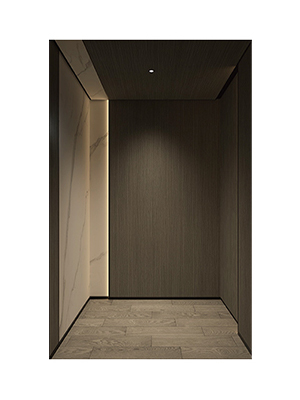The speed of a hospital bed elevator—also known as a patient bed elevator or medical freight elevator—is carefully designed to balance efficiency, safety, and comfort, rather than prioritize high speed. While these elevators are not the fastest type of elevator, their operating speed is optimized for medical environments where smooth, reliable, and secure transportation of patients, medical staff, and equipment is critical.
1. Typical Speed Range
Hospital bed elevators usually operate at speeds between 0.4 m/s to 1.0 m/s (approximately 80 to 200 feet per minute), depending on the building height and application:
Low-rise buildings (2–5 floors): 0.4–0.6 m/s
Mid-rise hospitals (6–10 floors): 0.7–1.0 m/s
High-rise medical centers: Up to 1.6 m/s (in modern installations)
This is slower than passenger elevators in office buildings (which can reach 3–8 m/s), but faster than freight or service elevators used for cargo only.
2. Why Speed Is Not the Priority
In a hospital setting, the primary goals are:
Patient safety and comfort
Stable transport of critical equipment
Smooth acceleration and deceleration
Precise floor leveling
A fast-moving elevator could cause discomfort for critically ill patients, disrupt IV lines or monitors, or increase the risk of accidents during entry and exit. Therefore, smoothness and reliability are prioritized over speed.
3. Design Features That Affect Speed
Several design elements influence the operating speed and performance of hospital bed elevators:
Heavy Load Capacity:
These elevators typically carry 630 kg to 1,000 kg (1,400–2,200 lbs), including a full-size hospital bed, patient, nurse, and medical devices. Heavier loads require more controlled acceleration and braking, limiting top speed.
Smooth Start/Stop Technology:
Equipped with variable frequency drives (VFD) and soft-start systems, these elevators minimize jerking motions, ensuring a gentle ride—especially important for ICU or post-operative patients.
Accurate Leveling:
Hospital bed elevators feature automatic leveling systems that align the cabin floor precisely with the hallway floor (within ±5 mm). This prevents tripping and allows easy rolling of beds and stretchers—slightly slowing the process but enhancing safety.
Dedicated Operation Mode:
Many systems have a "medical priority" or "bed transport" mode, which may bypass certain floors or reduce stops to improve efficiency without increasing speed.
4. Speed vs. Efficiency
While not fast in terms of meters per second, hospital bed elevators are highly efficient in real-world use:
Dedicated service: Often reserved for medical transport, reducing wait times.
Group control systems: In large hospitals, multiple elevators are managed by intelligent dispatch systems to minimize delays.
Throughput optimization: Designed to move beds quickly between key departments (ER, OR, ICU, imaging), even at moderate speed.
For example, moving a patient from the operating room to ICU may take under 2 minutes, including door opening, travel, and leveling—making the system feel fast despite modest speed.
5. Comparison with Other Elevator Types
| Elevator Type | Typical Speed | Use Case |
| Hospital Bed Elevator | 0.4–1.0 m/s | Patient + bed + equipment transport |
| Passenger Elevator | 1.0–3.0+ m/s | Office buildings, hotels |
| Freight Elevator | 0.3–0.6 m/s | Cargo only, slower and less precise |
| Home Elevator | 0.15–0.2 m/s | Residential, low floors |
As shown, hospital bed elevators strike a balance between freight durability and passenger comfort, with speed tailored to medical needs.
6. Noise and Vibration Control
Even at moderate speeds, hospital elevators are engineered for quiet operation (typically below 55 dB). This is crucial in healthcare environments where noise can disturb patients and affect recovery.
Hospital bed elevators are not designed to be fast, but they are designed to be efficient, safe, and reliable. Their speed—typically between 0.4 and 1.0 meters per second—is intentionally moderate to ensure smooth, stable, and comfortable transport for patients on medical beds, especially those in critical condition.
While they may not match the speed of commercial passenger elevators, their optimized performance, precise control, and dedicated use make them one of the most effective solutions for vertical transportation in hospitals, clinics, and care centers.
In healthcare, "fast" means "safe and timely"—not just "high speed." And in this regard, hospital bed elevators deliver excellent performance where it matters most.












